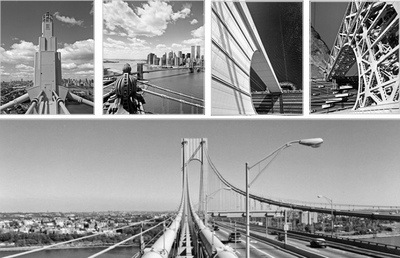Larys Frogier, New Director of Rockbund Art Museum, Shanghai
Thomas Ou, Chairman of Rockbund Art Museum in Shanghai, has appointed Larys Frogier Director of Rockbund Art Museum, starting on 1st January 2012. Larys Frogier has been consistently involved in many fields in contemporary art, including research, curating, management and teaching. He has strong academic background, rich curatorial experience and wide access to resources in international art world, which will help Rockbund Art Museum further expand its programming horizon and academic scope, and strengthen the Museum’s connections to and collaboration with international artists, institutions and scholars while maintaining a focus on the Chinese contemporary art. His longtime experience in art institution management will bring new energy to the operation of the Museum as well.
Since its inauguration in May 2010, Rockbund Art Museum following the operational principles of “Scholarship, Professionalism, Internationalization”, has presented a number of exhibitions which were both scholarly rigorous and socially influential, and a series of very popular educational activities. These programs have earned the Museum extensive acclaims from both the general public and the art world. We expect that, under the leadership of Larys Frogier, the Rockbund Art Museum will enter a new phase of development in its operation and management.
LARYS FROGIER - BIOGRAPHY
Larys Frogier is a contemporary art historian with a research PhD at the prestigious School for Advanced Studies in the Social Sciences in Paris (École des Hautes Études en Sciences Sociales). He has also an Advanced Master degree in art history from the University of Rennes in France.
Larys Frogier is very much involved in artistic and social challenges in post-global contexts where ongoing social, economical, aesthetical, environmental transformations ask for new ways of interrelations, citizenship and reinvented creativity.
In 2010-2011, he was invited by the British Council to take part in their “Innovators Club” connected to the Cultural Leadership International program and in partnership with the Resource centre on Europe and Culture (Relais Culture Europe).
Larys Frogier curated numerous exhibitions and published extensive essays on the works of international artists: Adel Abdessemed, Nan Goldin, Felix Gonzalez-Torres, Olga Kisseleva, Li Wei, Gianni Motti, Paola Pivi, Ugo Rondinone, Charles Sandison, Kiki Smith, Wang Du, Yang Jiechang…
In 2009, he was the guest curator at the Museu Colecção Berardo in Lisbon for the show Risk the Real: the Making of the Figure, exhibiting prestigious works from Carl Andre, Francis Bacon, Georg Baselitz, Daniel Buren, Marcel Duchamp, Dan Flavin, Lucio Fontana, Robert Gober, Jenny Holzer, Anish Kapoor, Yves Klein, El Lissitzky, Bruce Nauman, Francis Picabia, Pablo Picasso, Michelangelo Pistoletto, Jackson Pollock, Richard Serra, Cindy Sherman, Frank Stella, Andy Warhol…
From 2000 to 2011 he was the Director of the contemporary art centre La Criée in the city of Rennes (France) where he facilitated powerful partnerships with international institutions such as Tramway in Glasgow, Maumaus Superior School of Visual Arts in Lisbon, Portikus in Frankfurt, Zak Branicka Foundation in Berlin, Altart Foundation in Cluj, Palais de Tokyo in Paris. He curated long term artistic projects (symposiums, residencies, exhibitions, publications) questioning the links and ruptures between broaden Europe and transcontinental areas.
Larys Frogier taught art theory, history of art and curatorial studies at the University of Rennes. He was also a researcher at the Archives for Art Criticism. He gave many lectures abroad (ICA London; Centre Georges Pompidou, Paris; Kulturni Centar Beograda, Serbia; Heidelberg University; Villa Gillet, Lyon...). He published essays in art journals such as Parachute (Canada), Text Zur Kunst (Germany), Blocnotes (France), and published artbooks with famous contemporary art editors (Hatje Cantz, Ostfildern; JRP/Ringier, Zürich; Walter König, Cologne; Cercle d’art, Paris).
Larys Frogier is a member of the international association of curators of contemporary art (IKT) and of the international association of art critics (AICA).
Lai Hsiangling, former Director of RAM, is now at the Board of RAM and serves as Executive Director since 2011.
ROCKBUND ART MUSEUM
20 Huqiu Road, Huangpu District, Shanghai 20002









